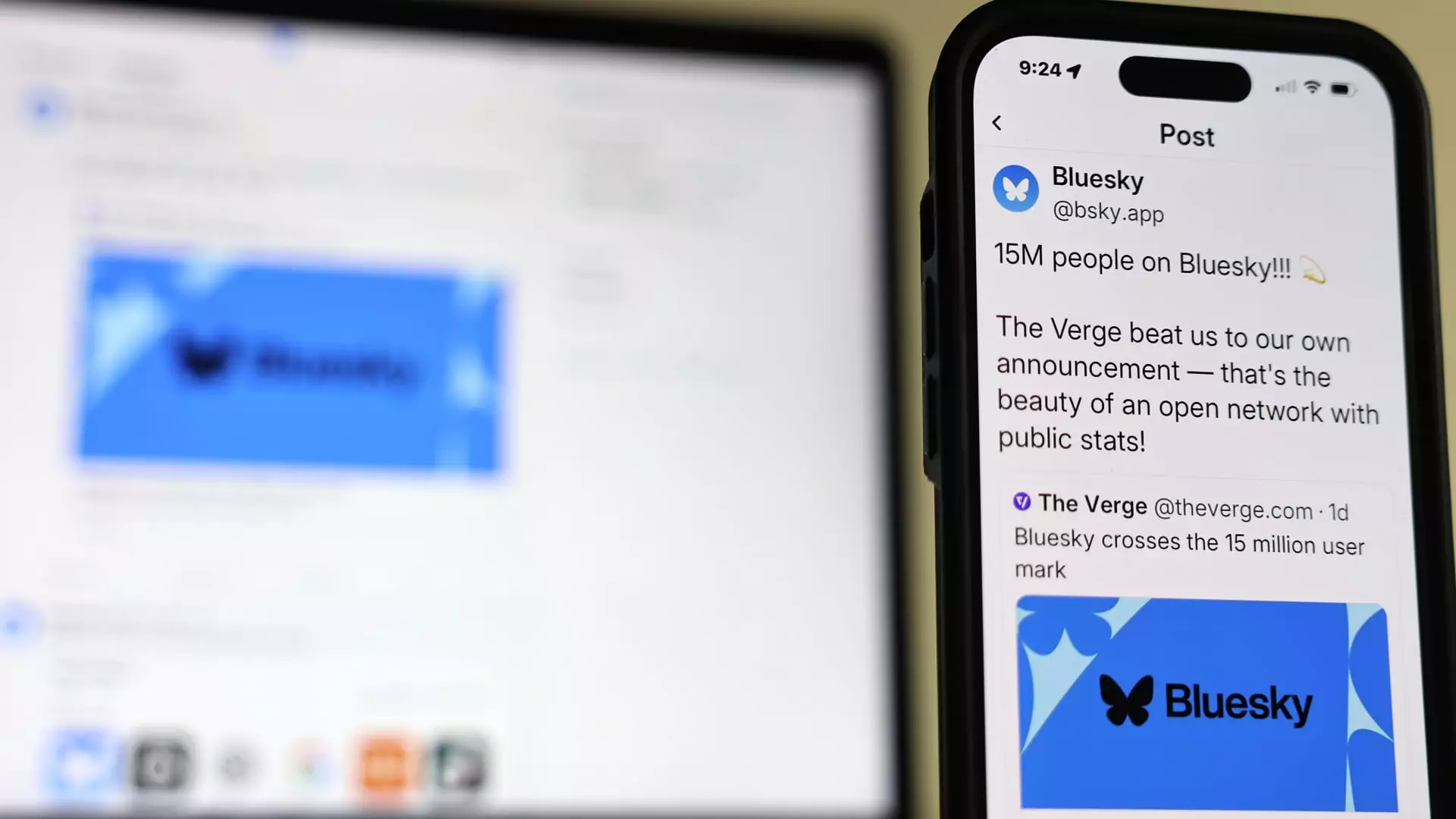Bluesky has made headlines recently, particularly following the presidential election earlier this month, escalating its profile amidst fierce competition from established giants like Elon Musk’s X and Meta’s Threads. In an era where users are increasingly wary of monopolistic practices and fluctuating platform policies, Bluesky’s ascent is emblematic of a broader desire for alternatives in the social media landscape. With over 21 million users, Bluesky is still positioned far behind Threads, which boasts approximately 275 million monthly users, according to Meta CEO Mark Zuckerberg, and X, which Musk claims has around 600 million monthly users.
The primary draw of Bluesky lies not only in its growing user base but also in its underlying philosophy of “billionaire proof” design principles articulated by CEO Jay Graber. This unique strategic positioning reflects a commitment to open structure, allowing users to migrate seamlessly even if the platform were to undergo significant changes or ownership transitions. Graber emphasizes that users can take their followers with them, a critical differentiator that seeks to mitigate the experience many users suffered during the tumultuous ownership transfer of Twitter to Musk in late 2022.
The disruptive shift witnessed when Elon Musk acquired Twitter serves as a cautionary tale for many users and developers alike. Following the acquisition, there was an exodus of users dissatisfied with the changes implemented, leading to a massive migration to rival platforms. Graber’s acknowledgment of this phenomenon underlines the strategic foresight embedded in Bluesky’s architecture, aimed at fostering user retention through customizable experiences. The open-source framework encourages developers to innovate on top of Bluesky’s foundation, thereby inviting a broader ecosystem to flourish in ways that traditional platforms seldom allow.
Bluesky represents a shift from the often opaque operational practices of social media entities, where users are frequently left in the dark about algorithmic changes and data usage. By committing to transparency, Bluesky seeks to build a community that feels empowered rather than exploited. Graber’s seasoned background, including his role in creating Happening— a social network oriented around events— has undoubtedly informed this vision, creating an environment that is both familiar and groundbreaking.
In terms of revenue strategy, Bluesky is charting a different course. Graber has expressed a commitment to avoiding advertising models that bombard users with algorithmically determined ads, a practice prevalent across social networks. Instead, the platform is banking on subscription models that offer users access to unique features, coupled with an expanding developer ecosystem that welcomes third-party integrations. This shift suggests a refreshing approach to monetization that prioritizes user experience over traditional advertising revenue streams.
With the company raising a notable $15 million in recent funding led by Blockchain Capital and totaling $36 million thus far, the financial backing underscores a growing belief in Bluesky’s potential. This financial foundation will inevitably bolster their contributions to their unique service offerings, while also continuing to refine a platform that encourages user autonomy without the chains of typical profit-driven motives.
Looking Ahead: The Potential of Bluesky
As Bluesky embarks on its journey, the road ahead is undoubtedly fraught with challenges, not least of which is competing with the entrenched power of X and Threads. However, the emphasis on user-centric design, transparency, and empowerment sets Bluesky apart as a prospective innovator in the realm of social media. Should the platform continue to cultivate its unique identity while expanding its user base and feature set, it could very well emerge as a viable alternative to the social media status quo.
Ultimately, the evolution of Bluesky offers hope to users who yearn for a social media landscape that respects their autonomy and preferences. By focusing on community, transparency, and user empowerment, Bluesky has the potential not only to survive but to thrive in a space that has often been characterized by monopolistic practices and diminishing user trust. As we look to the future, the emergence of platforms like Bluesky could signify a welcome shift towards more equitable social media experiences.


Leave a Reply